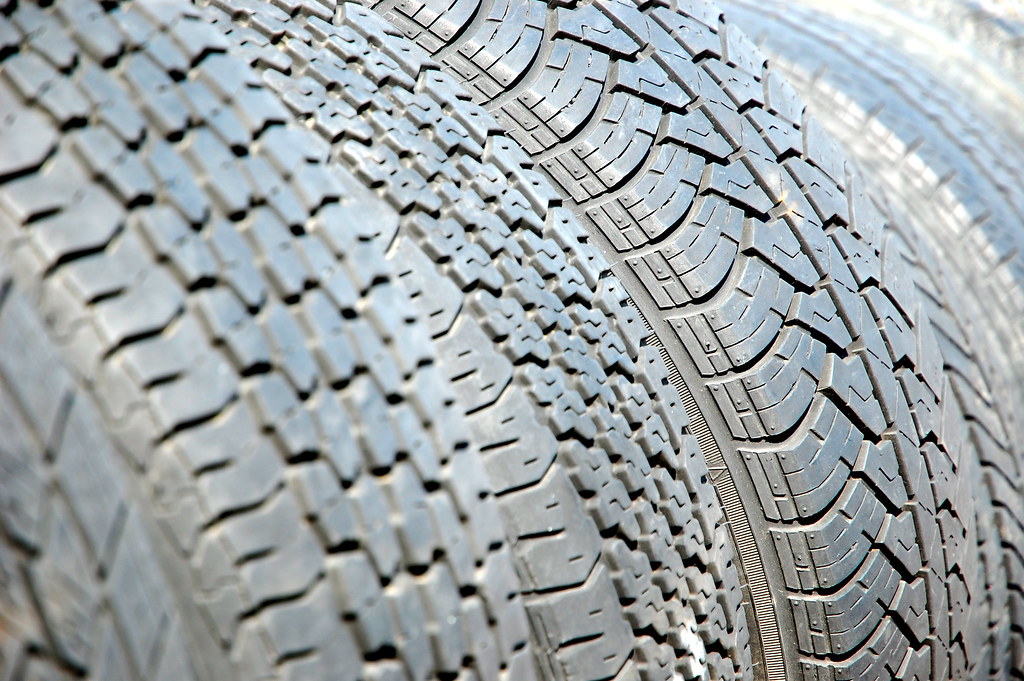Administration of the project
Tire Friction
Table of Contents
What is tire friction?
The wheel is an ingenious invention that made a huge impact on our lives. The main achievement here is the reduction of friction of the rolling wheel against the road as compared to the case of sliding something against the same road. First wheels were made of stone, followed by wooden and leather coated wooden wheels. With the improved road conditions and increasing driving speeds, rubber-made wheels were invented. Rubber deforms and adjusts itself to the road, which in addition to the relatively low friction, allows for reliable control for steering the vehicle.
It is often the good road surface conditions and modern tire construction that provide people with safe travel. Thanks to the advancement of technology, there has been a significant improvement in the management of tire/surface friction. It was achieved by increasing the coefficient of friction which, in turn, was achieved by the introduction of grooves, shot blasting, grinding, removal of rubber residues from the road surface, etc.
Friction is a force that resists against movement of a body relative to another body[1]. Today, thanks to the development of modern technologies, we can accurately and easily measure friction, or to be more precise, friction coefficient [2]. However, in many cases friction needs to be measured frequently. For example, the friction coefficient between the tire and the road surface measured during a dry period of a day can drastically change due to the rainy conditions 30 minutes later. Therefore, it is necessary to give drivers and pilots an accurate measurement time and actual value.
However, knowledge of friction coefficient does not provide drivers and pilots with complete information about the frictional resistance of the road. It is influenced by a large number of factors such as the type of road surface, vehicle speed, wind speed, tire types, tire pressure, overall braking performance, and the experience of the vehicle driver. In addition, various road surface contaminants such as snow, ice, and water can also significantly and adversely affect the friction between the tire and the surface. It can seriously decrease the ability to brake or steer. The good news is that in recent years, many research projects have succeeded in gaining a better understanding of the interface interaction between vehicle’s tires and road surfaces in erratic conditions.
Here is a great example of what may happen when you lose control of the vehicle (no one was seriously injured during this accident):
Tire and Road Characteristics Affecting Friction
In general, friction between the tire and the road surface, and hence the safety of driving, can be increased by lowering vehicle speeds, increasing the tire pressure, and keeping the tire wear level below 50%. Where the level of tire wear itself can be correlated with the vehicle’s mileage in the case of a regular car and the number of landings for the aircraft tires. Among other factors directly influencing tire friction are the tire design, the degree of wear and pressure level, the aspect ratio of the contact patch, and the speed of the transport itself affect the ability to successfully drive a vehicle. For example, aircraft tire pressure is significantly higher than a regular car tire pressure due to a difference in operating speeds.
A practical note for car drivers: no matter how large the friction coefficient between the tires and the road is, the increase of the speed by two times, leads to an increase of the stopping distance by four times. You can find the details of this estimation here.
Due to extensive and on-going research[5], the characteristics of tires are constantly evolving. An example of such evolution can be seen in modern aircraft tires. Before the advent of jet aircraft, most aircraft tires had three or five annular tread grooves. With the help of grooves on the roads and cutting of the tread chevrons, the middle groove was eliminated from the aircraft tires [2]. It is the reason for the appearance of a wide rib area in the center of a tire. This rib area helps to reduce the chevrons to an acceptable level. In addition, a lot of aircraft tires used to be manufactured using bias construction and natural rubber. However, over the past years, most aircrafts have been using radial coded tires made of synthetic rubber, which significantly reduces their wear. This advantage can be attributed to reduced bending at the point of contact of the tire with the road. With increasing vertical load deflection, radial tires do not need to be retreaded and this leads to significant cost savings[2].

The road surface characteristics that affect the friction of a tire include texture, rutting, inclination, roughness, and presence of surface contaminants. For example, surface rutting and unevenness can reduce water drainage, and sometimes create conditions for hydroplaning (aquaplaning). Various contaminants such as snow or hard ice prevent the tire from making contact with the road surface and, as a result, the good textural advantages of a tire that initially affect friction are minimized.
In general, the texture of the road surface is influenced by many factors, including size and aggregate matrix, blend ratio, the direction of the texture of the top layer, depth, and so on. Texture can be characterized at two scales: micro-texture and macro-texture. Micro-texture includes small surface elements that can be found on stone particles. At the same time, the macro-texture includes fairly large-scale roughness – an aggregate matrix. In a typical graph of the tire’s friction versus speed gradient on wet roads, the magnitude of the friction is a function of the micro-texture, and the slope (rate of increase) is a function of the macro-texture. Also, the properties of the paving mix and the finish of the surface itself directly affect the macrotexture behavior. Due to the macrotexture, firstly, the possibility of separating the tire from the road surface due to hydroplaning is reduced, secondly, higher friction is provided for vehicles that are moving at higher speeds.
Tire-Road Friction Coefficient
Table below demonstrates the estimated tire-road friction coefficient for various road conditions [4].
| Tire-Road Friction Coefficient | |
| Dry Asphalt | 0.8 |
| Wet Asphalt | 0.6 |
| Snow | 0.3 |
| Ice | 0.1 |
Hydroplaning (aquaplaning)
The use of vehicles during rainy periods may be unsafe due to a problem with water drainage at the junction of the tire and the road. Water should quickly leave the place of contact of the tire with the road surface; otherwise, the tire friction can reduce substantially due to the generation of a very thin water film between two surfaces. A hydroplaning (aquaplaning) phenomenon, sometimes referred to as thin-film lubrication occurs because the tires cannot break up the thin residual liquid film that forms after the main water leaves the tire track. Worn tires or tires with a smooth tread are especially susceptible to this phenomenon.
Due to the hydroplaning, when the hydrodynamic pressure exceeds the pressure between tire and surface, water penetrates the contact area with the tire. At this point, the tire becomes fully or partially separated from the surface of the pavement. Under these conditions, the friction of the tire is reduced to almost zero
The contact pressure [3] that appears between the tire and the roadway sets the rate at which water leaves the space under the tire. When the speed of transport is equal to or exceeds the speed of water removal from contact the state of full hydroplaning is achieved. However, it is known that high-pressure tires are capable of removing water faster than low-pressure tires; hence, high-pressure tires are less susceptible to hydroplaning at a given speed.
References
- [1] https://www.tribonet.org/wiki/friction/
- [2] Yager T.J. (2013) Tire Friction (Design, Tire–Road Interactions). In: Wang Q.J., Chung YW. (eds) Encyclopedia of Tribology. Springer, Boston, MA. https://doi.org/10.1007/978-0-387-92897-5_219
- [3] https://www.tribonet.org/contact-pressure-for-rough-surfaces-a-tutorial/
- [4] Gustafsson, Fredrik. 1997. “Slip-Based Tire–Road Friction Estimation.” Automatica 33 (6): 1087–1099
- [5] Hentschke, R., Plagge, J. Scaling theory of rubber sliding friction. Sci Rep 11, 18306 (2021). https://doi.org/10.1038/s41598-021-97921-0.


Be the first to comment